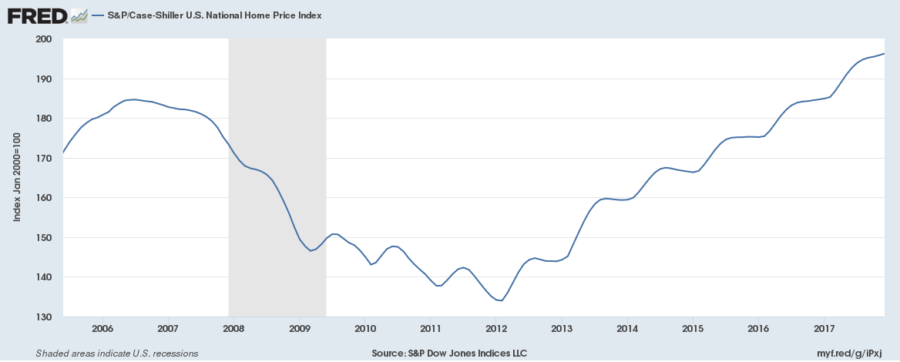Home prices continued rising during the last month of 2017, but there are early signs they may begin to slow in the coming months.
The Case Shiller National Home Price Index jumped 6.3 percent in the 12 months leading up to December, up from a 6.1 percent year-over-year gain reported in November, according to data released Tuesday.
The report shows the continued effects of limited supply on the housing market, which has left many prospective homebuyers in a tough spot as home prices continue to outpace income growth and inflation. At the same time, according to data from the Commerce Department, new home sales dropped in January for the second month in a row due to this inventory shortage, and some expect the decline to worsen with rising mortgage rates.
“There is still a relatively subdued amount of construction going on,” said Thomas Simons, senior economist at Jefferies, an investment firm. “Low supply remains the biggest inhibitor towards further increases in sales, and on the flip side of that coin, it’s a big driver behind higher prices.”
The 20-city index, which covers major metropolitan areas in the nation, rose 6 percent over the year and the 10-city index reported a 6.3 percent gain.
Seattle reported the largest jump in prices, with a 12.7 percent year-over-year gain, followed by Las Vegas, which reported a 11.3 percent increase, and San Francisco, which reported a 9.2 percent increase.

While the most recent housing prices data wasn’t too much of a departure from previous reports, there are signs that price gains could slow in the coming months.
“This report showed a slightly slower pace of house price expansion than in previous months and I expect that to be a theme throughout 2018,” said Robert Brusca, chief economist at Fact & Opinion Economics, a Manhattan-based consulting firm. Rising mortgage rates, which started climbing at the beginning of 2018, and lackluster home sales, in particular, could push prices down, he said.
Housing starts data released earlier this month was encouraging, and may signal supply issues facing the sector beginning to ease, which could also slow the surge in prices.
Some economists say the new tax plan could slow demand for homes due to limits on deductions for state and local taxes, and potentially push down prices as a result, particularly in wealthier parts of the country.
But Michael Englund, chief economist for Action Economics, says he expects prices to continue on their current path, and anticipates the tax plan will have positive effects on prospective home buyers.
“Tax cuts and spending increases with the most recent budget deal are going to be stimulative, and that’s going to have an upward impact on growth,” Englund said.